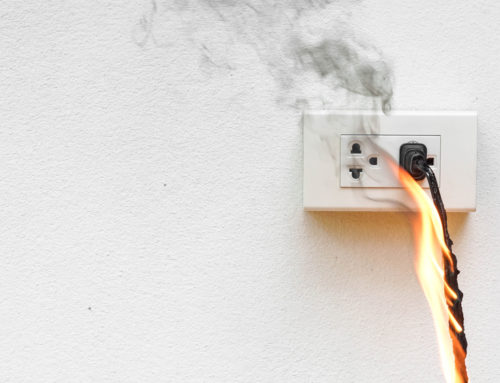Many assume that ANY kind of damage done by a tenant will be covered. This is simply not the case. Though coverages vary, certain types of damage done by tenants are excluded in standard property insurance policies.
While Intentional tenant damage and wear-and-tear are excluded, accidental tenant damage done by tenants is covered by most property policies. For example, an accidental kitchen fire caused by inattentive cooking would generally be covered. If your policy includes Water Damage, there may also be coverage for water discharge. An example of this would be the tenant’s child sending their stuffed fish for a swim in the “local bowl.” Your policy will most likely exclude Sewer and Drain Backup unless you have NREIG’s Tenant Protector Plan.
How much can tenant damage cost me?
The potential loss varies based on the time and resources needed to repair the damage to get the unit rent-ready again. Based on claims data, we’ve seen damage amounts equal anywhere from $5,000 to $30,000. It can be as much as your property is worth or greater depending on your geographic location. On top of repair cost, you must add in any lost rental income, unless you have Loss of Rents coverage in place. Interruptions like this can wreak havoc on your cash flow and profits but there are ways to avoid it!
What type of tenant damage is excluded from your insurance policy?
Two main types of tenant damage are excluded: Intentional Damage and Wear-and-Tear.
Intentional tenant damage might be a tenant purposefully causing harm to your property during the eviction process or shortly thereafter; it is usually a sudden, one-time event. This could include damage such as broken doors, missing appliances, spray-painted walls, smashed mirrors, and a host of other nasty surprises. Damage like this is reimbursed through a security deposit or a civil suit.
Wear-and-Tear can look severe in some cases but is caused by the daily stresses of living over time. For example, broken blinds, marks on walls, worn/stained carpet, nail holes, scratched-up floors, and damaged bath fixtures.
This tenant damage is also addressed through the security deposit. Some types of wear may just be the cost of doing business, but it is up to you to decide which items would constitute normal maintenance versus those items for which the tenant will be held responsible. Check your local laws and ordinances regarding security deposits as well.
These types of damage are NOT: Damage done by tenants is not considered Vandalism or Theft according to some carriers. Though the damage done to your unit may be similar to Vandalism or Theft, the difference is that you have a written contract (i.e. the lease) entrusting your tenant with the care of your property. That contract stipulates the penalties for any misuse of the property.
How can I protect myself from intentional tenant damage?
To combat Intentional Tenant Damage: Two words – thorough screening. There is no substitute for placing a reliable tenant. If the relationship turns sour during their stay, Cash-for-Keys may be a good alternative strategy. Don’t be tempted to waive a security deposit to place a tenant. Placing someone that you may end up having to evict will likely cost you much more than foregoing one or two more months of rental income so you can do your due diligence in placing a better tenant.
To keep Wear-and-Tear to a minimum: During the check-in and walk-through, give your tenant a detailed list of the cost to repair or replace specific items in the property. Your goal should be to help them get back their full deposit – let them know that upfront. Also, showing up for your regular maintenance visits demonstrates your care for the property and your lead may inspire them to take better care of their home.
If you would like additional protection for tenant-caused negligent losses, ask your Client Service Advisor about our Tenant Protector Plan. Not only does it provide more coverage, but also gives you $1,000 per residence premises of Skip Rent coverage.






